 Mysteries
Mysteries  Mysteries
Mysteries  History
History 10 Surprising Stories About the Texas Rangers
 Humans
Humans 10 Philosophers Who Were Driven Mad by Their Own Theories
 Miscellaneous
Miscellaneous 10 Video-Game-Worthy Weapons and Armors from History
 Weird Stuff
Weird Stuff 10 Psychics Who Accurately Predicted Wartime Events
 The Arts
The Arts 10 Pieces of Art Inspired by a Broken Heart
 Health
Health 10 Science Fiction-Sounding New Medical Treatments
 History
History 10 Surprising Facts About the Father of Submarine Warfare
 Space
Space Ten Astonishing New Insights into Alien Worlds
 Weird Stuff
Weird Stuff 10 Bizarre Summer Solstice Rituals Still Practiced Today
 Mysteries
Mysteries Top 10 Haunting Facts About the Ghost Ship MV Alta
 History
History 10 Surprising Stories About the Texas Rangers
 Humans
Humans 10 Philosophers Who Were Driven Mad by Their Own Theories
Who's Behind Listverse?

Jamie Frater
Head Editor
Jamie founded Listverse due to an insatiable desire to share fascinating, obscure, and bizarre facts. He has been a guest speaker on numerous national radio and television stations and is a five time published author.
More About Us Miscellaneous
Miscellaneous 10 Video-Game-Worthy Weapons and Armors from History
 Weird Stuff
Weird Stuff 10 Psychics Who Accurately Predicted Wartime Events
 The Arts
The Arts 10 Pieces of Art Inspired by a Broken Heart
 Health
Health 10 Science Fiction-Sounding New Medical Treatments
 History
History 10 Surprising Facts About the Father of Submarine Warfare
 Space
Space Ten Astonishing New Insights into Alien Worlds
 Weird Stuff
Weird Stuff 10 Bizarre Summer Solstice Rituals Still Practiced Today
10 Of The Most Fascinating Thieves Of All Time
The lives of thieves have always captivated the minds of the public, be it through books, movies, or newspaper headlines. They lead dangerous and fascinating lives full of surprises, risks, and uncertainty. We are all familiar with the most famous thieves, such as romanticized couple Bonnie and Clyde, trickster Frank Abagnale, and bank robber John Dillinger. Below, however, we have put together a list of lesser-known thieves with utterly fascinating stories that are worth sharing.
10Jeanne de Valois-Saint-Remy
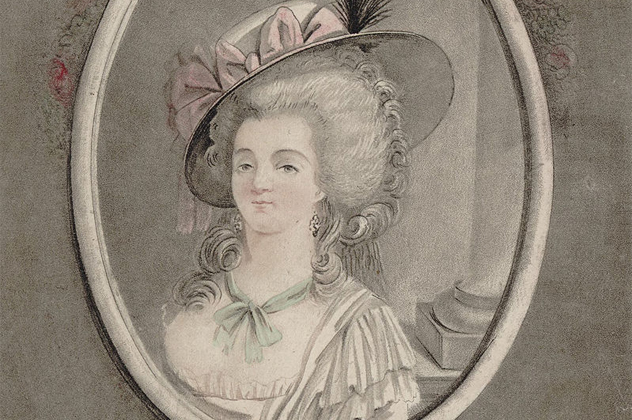
Jeanne de Valois-Saint-Remy, also known as Comtesse de la Motte, was a French thief who became famous through the “Affair of the Diamond Necklace.” When her husband was unable to provide the extravagant lifestyle she wished for, she quickly decided to take matters into her own hands. At the time, any citizen dressed appropriately was free to enter Versailles, and Jeanne, of course, took the opportunity. There, she took a man named Retaux de Villette as her lover, and she later met Cardinal Prince Louis de Rohan. She soon found out that the cardinal was trying to receive the queen’s approval, but to no avail. At around the same time, the jeweler Charles Auguste Boehmer was trying to sell an incredible necklace at an incredible price. The sum of money was so huge that only the king could afford it, but Louis XVI and his wife, Marie Antoinette, had no desire to own such an item.
So Jeanne, with the help of her husband and her lover, concocted a plan. Retaux de Villette forged letters from the queen to the comtesse in which he expressed the queen’s desire to buy the necklace despite the king’s reluctance to spend such an extravagant amount. The letters were sure to mention that the queen hoped that the cardinal would step up and lend her the money.
Soon enough, the letters were shown to the cardinal, and a late night meeting was arranged with a prostitute who resembled the queen. The cardinal was approved by the “queen,” and the jeweler was contacted. Jeanne received the necklace with orders to pass it on to the queen. Of course, the necklace never reached the queen: Jeanne’s husband took the necklace apart and sold the diamonds in London. The whole affair only came to light when the cardinal was arrested. Jeanne was arrested, too, but she escaped from prison disguised as a boy. She made her way to London, where she eventually published her memoirs.
9Son’ka The Golden Hand
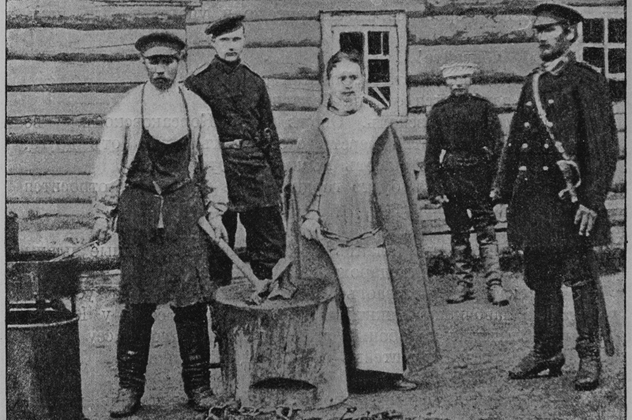
Sofia Blyuvshtein, who is best known as Son’ka the Golden Hand, was a Russian thief from the 19th century who mainly stole jewels. Not much is known about her life except for a few famous cases that seem both improbable and fascinating.
According to one case, Son’ka visited a jewelry store where she picked some jewels for a large sum of money. She then asked the jeweler to deliver the order to her house, where her husband, who was a doctor, would pay for them. The jeweler did as he was asked. Once he arrived at the house, the young lady received him, took the jewels, and told him to wait in her husband’s office until he arrived with the money. But Son’ka’s trickery went deeper than that. She’d visited the doctor earlier and had told him that she was the wife of a man named Von Mel, who had an unhealthy obsession with buying and selling diamonds. She told the doctor that her husband would arrive shortly and paid for his treatment up front. When her “husband” the doctor came to see her “husband” the jeweler, the jeweler requested the money and the doctor had him put in a mental hospital. By the time the charade was sorted out, Son’ka was long gone.
Of course, lying and pretense were not the only tools Sonya employed in her trade. Some of her special methods included long fingernails where she hid precious stones, a dress bag to hide jewels, and a small monkey who swallowed precious gems while she negotiated at the jewelry store.
8Vincenzo Pipino

Vincenzo Pipino, an Italian thief born in Venice, is a classic modern example of the gentleman thief. Like Robin Hood, he only stole from the rich—in fact, he wouldn’t even steal broken watches or other items that were in need of repair, since doing so would affect the livelihoods of the repairmen.
A true lover of his city, Pipino always made sure that the art pieces he stole would never leave Venice. He did that by returning them to their rightful owners for a ransom. For a thief, he was surprisingly moral and clean—he never used violence or blackmail, and he tried to make as little of a mess as possible while he was robbing someone. It is said that he would even empty sugar bowls out onto a kitchen towel instead of just dumping the sugar straight onto the table or the floor.
Most importantly, Pipino is the only person to successfully steal from the Doge’s Palace. His method of doing so was surprisingly easy and involved little more than patience. On October 9, 1991, Pipino entered the palace with a group of tourists. He lagged behind the group, and while they were busy admiring art, he slipped into a cell in the palace’s connected prison to wait for nightfall. Since Pipino knew the exact time the guards would make their rounds, he waited for them to pass and then slipped back into the palace, where he simply took the painting Madonna col bambino off the wall. He then left the palace through a side door.
7Vincenzo Peruggia
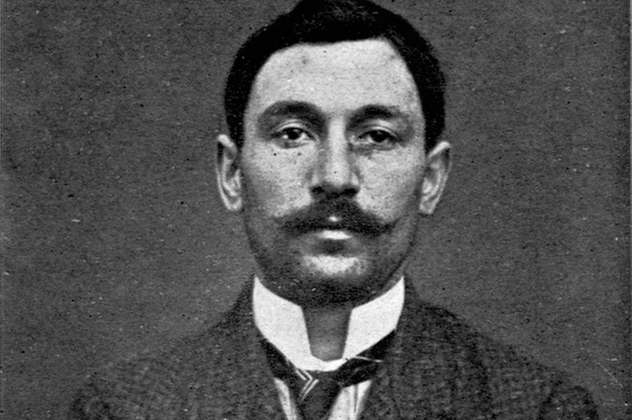
Vincenzo Peruggia was an Italian thief who, in 1911, stole one of the most famous paintings in the world: the Mona Lisa. The day before his famous theft, Peruggia, who was a former Louvre worker, hid in the museum. Fully aware of the fact that the museum would be closed the following day, he knew he would have plenty of time to execute his theft.
The following morning, Peruggia came out of his hiding place wearing a uniform that was worn by Louvre workers. When he noticed that the room where the Mona Lisa hung was empty, he entered it and took the famous painting off the wall. Bringing it out to an enclosed stairwell, he took the painting out of its frame and hid the canvas under his smock. He then tried to leave the museum, only to discover that the door would not open. Thankfully, a friendly plumber was walking by right at that moment, and he helped Peruggia with the door.
6Jonathan Wild
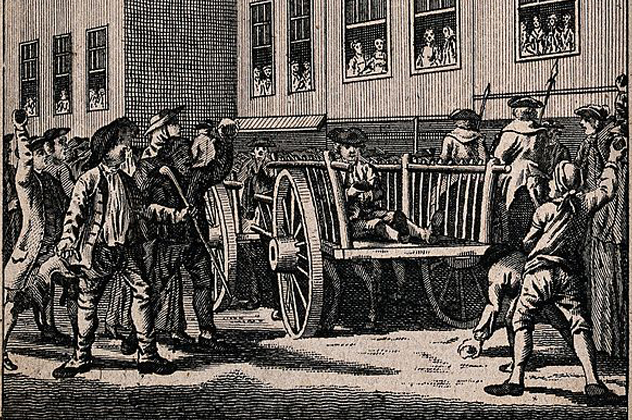
Jonathan Wild was a famous London figure known as the “Thief-Taker General.” He lived in the 18th century at a time when the public was paid to help the police locate thieves. If successful, these individuals were awarded half the value of the stolen goods. Of course, this offer was too good to pass up, and a new profession was soon born: the thief-takers. While the idea sounded good at first, thief-takers soon began taking advantage of the new system by essentially becoming thieves themselves. Such individuals would arrange a gang of robbers to do the dirty work, and after the theft was executed, they would turn in the stolen goods. Oftentimes, they would turn in the robbers also.
Wild grew up in Wolverhampton, got married, and had a son. However, he soon left his family and went to London. While there, he fell into debt and was sent to a small prison where he met some of his first underworld colleagues and acquaintances. When released from prison, he set himself up in the St. Giles area of London and was often visited by various characters of the criminal world.
Wild arranged his own gangs of robbers and soon had them bringing their stolen goods to his warehouses. The victims of the thefts would then come to Wild and describe the lost item. Calculating and careful, Wild would then place an ad in a newspaper asking for the lost item to be returned to him for a small reward. The arrangement left everyone content, and Wild became wildly popular with both thieves and the general public.
The authorities were aware of Wild’s activities and consequently introduced the Jonathan Wild Act, which dealt specifically with stealing goods for a reward. For a long time, Wild could not be convicted due to his use of middlemen. However, after Wild helped with the prosecution of a thief named Jack Sheppard, things began to slowly fall apart for him, and it wasn’t long before he was arrested and hanged.
Shortly after Wild was hanged, Jonathan’s wife, Mary Wild, started a rumor which said that Wild’s body had been taken to the Surgeon’s Hall for dissection. At the time, such an occurrence would not have been at all unusual, as the bodies of executed men were often used for medical research. And if surgeons couldn’t get the body legally, they often arranged to have it stolen from the grave. Mary Wild hoped that this ruse would allow Jonathan to be buried in peace. Unfortunately, a few days after the burial, Jonathan Wild’s body was dug up anyway.
5David Brankle

David Brankle was a bank robber who was nicknamed the “Interstate Bank Mart Bandit” by the police due to his penchant for robbing banks that were located inside supermarkets.
Brankle’s main motive for robbing banks was his son, whom he had with his third wife, Kim. Unfortunately, Brankle was unable to properly support his family, especially after Kim left her job to look after their son. To make matters worse, during Christmas dinner in 2001, Brankle’s in-laws declared that they would finance a divorce for Kim if Brankle failed to get his life in order.
Early in 2002, still stuck financially, Brankle went to a BMW dealership in Lousville where he made up a story about a broken-down car that belonged to his wife, saying that it should be towed in shortly. In the meantime, he asked the salesman to bring another car out for a test run. Brankle and the salesman proceeded onto the interstate, where Brankle asked the salesman for his mobile phone. After that, he stopped the car and, pointing a gun at the salesman, told him to get out. To make matters worse, the salesman had forgotten to make a copy of Brankle’s driver’s license.
Brankle now had a car but no money, and he knew that he had to rectify the situation quickly before his son was taken away from him. Thus he went to an Indianapolis neighborhood which he knew well. There, he walked into a bank carrying a computer-typed demand note, then simply walked out with the money. After the first time, it only got easier.
Brankle robbed 43 banks before he was stopped by a police officer for a traffic violation. The officer took his driver’s license and showed up at his doorstep a few days later after suspecting him for the BMW car robbery. Seeing police outside his house, Brankle panicked and fled with his son. After a brief car chase, he left the car and his son behind and continued fleeing on foot. He was eventually caught, and it was only after the police inspected the car that they realized Brankle might be a bigger fish than just a car thief. Eventually, Brankle admitted to all the thefts and was sentenced to 21 years in prison.
4Dick Turpin
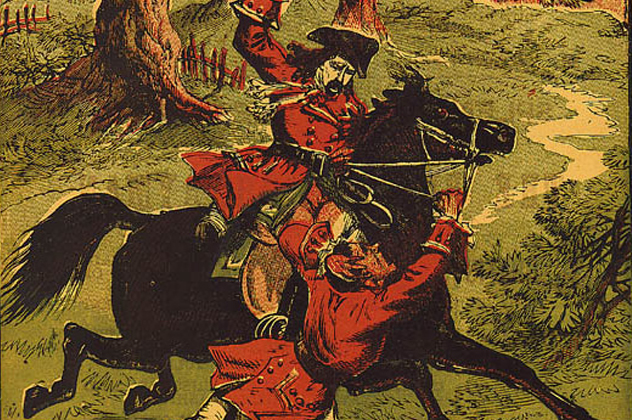
Dick Turpin was an English highwayman who is best known for riding from London to York on his horse, Black Bess, in less than 24 hours. Although that famous ride was most likely made by a different highwayman, Turpin still managed to secure himself a place in history.
It is said that Turpin served an apprenticeship with a butcher and later opened up his own butcher shop. He then began to steal lamb, cattle, and sheep for his shop and was eventually caught red-handed. He left his life behind and fled deep into the Essex countryside. It was not long before Turpin became a member of the Gregory Gang (also known as the Essex Gang) which mainly specialized in the invasion of solitary farmhouses. The London Evening Post would often report the gang’s activities, and the king posted a £50 reward for their capture.
Turpin then moved on to working with Captain Tom King, a well-known highwayman. They stole from anyone who crossed their path, and eventually another £100 was placed on Turpin’s head. Turpin did not just steal—he was not averse to getting his hands bloody, either, and a few deaths have been attributed to him.
Eventually, Turpin had to flee to Yorkshire, where he lived under the name of John Palmer. He continued his career of highway robberies and cattle stealing. Turpin was only taken into custody after he shot his landlord’s rooster and the latter threatened to kill him. The police began investigating his lifestyle and found out that he was responsible for several thefts around the place. Turpin was put into the dungeons of the York Castle while a proper investigation was carried out. He then decided to write to his brother asking for help, but his brother refused to pay the sixpence postage fee, so the letter was returned to the post office.
Turpin’s former schoolmaster recognized the writing on the envelope and, shortly, Turpin’s true identity was revealed and he was sentenced to death. He died in good form, though—a few days before his execution, he bought himself a new frock and a new pair of shoes. He also hired five mourners to be present at the execution. If only his brother had paid that sixpence, we might have had a far more interesting end to the story.
3Stephen Blumberg

Stephen Blumberg is a bibliomane who, in 1990, was arrested for stealing books from universities and museums. All the books he stole were worth a combined $5.3 million. Naturally, he became known as the “Book Bandit” and is regarded as the most successful book thief in history. Blumberg said that the reason he stole books was because he believed the government was plotting to ensure that ordinary citizens had no access to rare books and unique materials.
Blumberg believed that these stolen items would be returned to their owners, or at least someone who would look after them, in the event of his death. Of course, he said that it never once crossed his mind to sell these items, as that would be a dishonest thing to do. Blumberg was found guilty and imprisoned for four and a half years. After he was released, he went back to stealing and collecting books.
2The Dinner Set Gang

The Dinner Set Gang, also known as the Fat Cat Burglars, was a gang of thieves who operated and became famous in the late 1960s and 1970s. The main members of this gang were two brothers-in-law—Peter Salerno and Dominick Latella. Their specialty? Stealing from wealthy Americans while they were eating dinner.
The two brothers-in-law studied the potential victims until they recognized a regular pattern. They knew that the servants of the household would be too busy serving the meals to wander around the house, and in most families it was considered bad manners to leave the table in the middle of dinner.
Salerno would break into the house and go upstairs in search of jewels while Latella watched the members of the household dine. If anything went wrong, Latella would whistle. Salerno gave himself three minutes to get into the house, find the jewels, and leave. The brothers did not want any complications that could arise from confrontation and were prepared to leave empty-handed if necessary.
1The Forty Elephants Gang

The Forty Elephants Gang, or the Forty Thieves, was a British gang of ladies that formed in the 18th century. They worked alongside a famous men’s gang, the Elephant and Castle Gang. The Forty Elephants carried out the largest British shoplifting operation between the 1870s and the 1950s. Police records suggest that this gang has been active since the 1700s.
In a newspaper article from 1925, members of this gang are described as “handsome women about six feet tall.” However, it is also mentioned that some of the gang’s other members, primarily used as lookouts and scouts, were smaller.
Members of the Forty Elephants would dress in specially tailored clothes and steal goods worth thousands. They drove high-powered cars in the 20th century and knew that the police would not be able to find anything, even if they were pulled over—the gang members dropped any stolen goods into cars driven by the male gang. The women also used fake references to get employment at rich households. They would then, of course, rob the house and make off with the goods. Naturally, members of this gang were often arrested, but the rest of the gang always bailed them out.
Laura Martisiute is a student from Ireland in love with books, writing, coffee, and cats.








